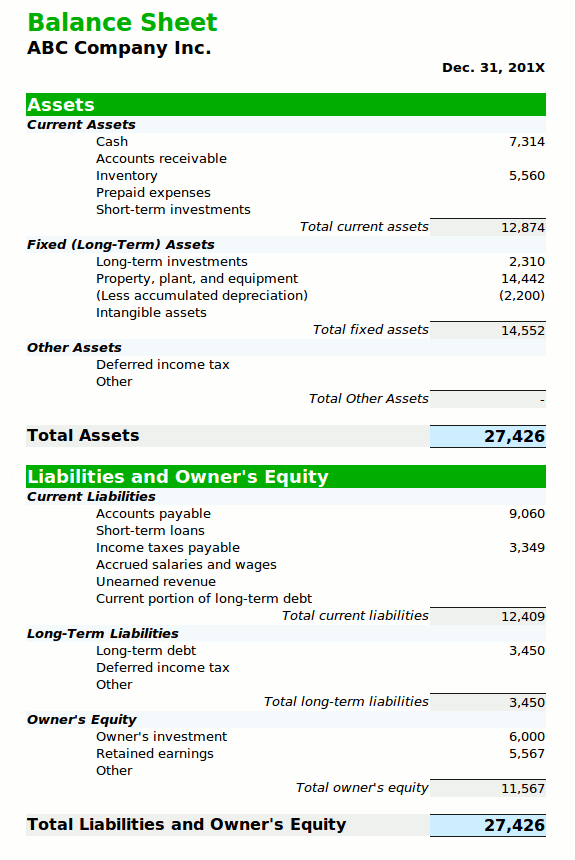Cash Budget
A cash budget is a prediction of future cash receipts and expenditures for a particular time period, usually in the near future. The cash flow budget helps the business determine when its income will be sufficient to cover its expenses and when the company will need to seek outside financing.

A Sample Balance Sheet
One of the assets listed is cash, which factors into the overall budget.
Components: Major classes include cash receipts and payments.
Cash Balance, Beginning of the Year
Cash Receipts
- Cash generated from operations
- Cash receipts from customers - Collecting the accounts receivable. Accounts receivable, also known as Debtors, is money owed to a business by its clients (customers) and shown on the business's balance sheet as an asset. It is one of a series of accounting transactions dealing with the billing of a customer for goods and services that the customer has ordered.
- Proceeds from the sale of equipment
- Dividends received: Dividends are payments made by a corporation to its shareholder members. It is the portion of corporate profits paid out to stockholders. When a corporation earns a profit or surplus, that money can be put to two uses: it can either be re-invested in the business (called retained earnings), or it can be distributed to shareholders.
- Other income: Other investment or other interest income, etc.
Cash Payments
- Cash paid to suppliers
- Cash paid to employees - Salary, wages expenses.
- Purchase of asset - Equipment, machine, real estate, etc.
- Payments related to mergers and acquisitions
- Interest paid - Interest of short-term or long-term debt.
- Income taxes paid
- Dividends paid - Paying dividends to shareholders or investors.
- Debt paid - Short term or long term debt principle.
- Other payment - Which includes Advertising, Selling expenses, Administrative expense, Insurance expenses, Rent expenses, etc.